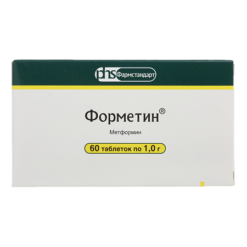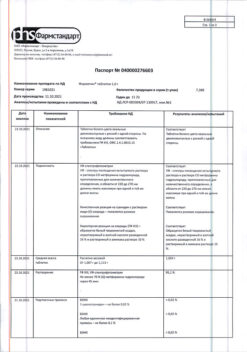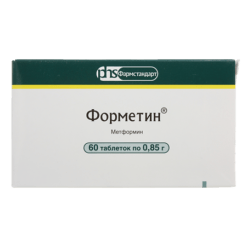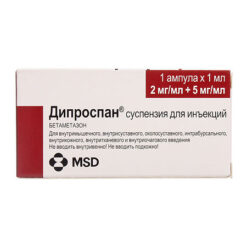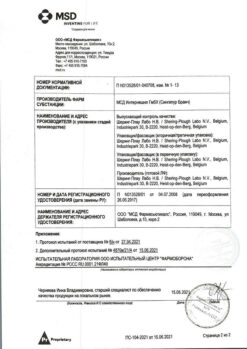No products in the cart.
Formetin, tablets 1 g 30 pcs
€1.00
Out of stock
(E-mail when Stock is available)
Description
Formethine has hypoglycemic effect.
Pharmacodynamics
Metformin inhibits gluconeogenesis in the liver, reduces glucose absorption from the intestine, increases peripheral glucose utilization, and increases tissue sensitivity to insulin. At the same time it has no effect on insulin secretion by beta-cells of the pancreas and does not cause hypoglycemic reactions.
Limits triglycerides and low-density lipoproteins in the blood. Stabilizes or reduces body weight. Has a fibrinolytic effect by inhibiting tissue-type plasminogen activator inhibitor.
Pharmacokinetics
After oral administration, metformin is slowly absorbed from the gastrointestinal tract. Bioavailability after a standard dose is 50-60%.
The maximum concentration in plasma is reached 2.5 h after oral administration. It practically does not bind with plasma proteins. It accumulates in the salivary glands, muscles, liver and kidneys.
It is excreted unchanged by the kidneys. The elimination half-life is 1.5-4.5 hours. Cumulation of the drug is possible in patients with impaired renal function.
Indications
Indications
Type 2 diabetes mellitus (especially in cases accompanied by obesity) when ineffective correction of hyperglycemia by diet therapy, including in combination with sulfonylurea drugs.
Active ingredient
Active ingredient
Composition
Composition
1 tablet contains:
active ingredient:
metformin hydrochloride – 1 g
excipients:
povidone medium molecular (polyvinylpyrrolidone medium molecular medical) – 0.034 g;
croscarmellose sodium (primellose) – 0.016 g;
magnesium stearate – 0.010 g.
How to take, the dosage
How to take, the dosage
The dose of the drug Formetin is set by the doctor individually depending on the blood glucose level.
Take without chewing during or after a meal, with plenty of water. The initial dose is 0.5 g 1-2 times a day or 0.85 g once a day, gradually (once a week) the dose is increased to 2-3 g a day. The maximum daily dose is 3 g.
In elderly patients the daily dose should not exceed 1 g.
Because of the increased risk of lactoacidosis, in patients with severe metabolic disorders the dose of the drug should be reduced.
Interaction
Interaction
Co-administration with sulfonylurea derivatives, acarbose, insulin, nonsteroidal anti-inflammatory drugs, monoamine oxidase inhibitors, oxytetracycline, angiotensin converting enzyme inhibitors, clofibrate derivatives, cyclophosphamide, β-adrenoblockers may increase the hypoglycemic effect of metformin.
In concomitant use with glucocorticosteroids, oral contraceptives, epinephrine, sympathomimetics, glucagon, thyroid hormones, thiazide and “loop” diuretics, phenothiazine derivatives, nicotinic acid derivatives may reduce the hypoglycemic action of metformin.
Cimetidine slows metformin excretion, which increases the risk of lactoacidosis.
Metformin may weaken the effect of anticoagulants (coumarin derivatives).
The simultaneous use of alcohol may lead to lactoacidosis.
Nifedipine increases absorption, maximum concentration, slows metformin excretion.
The cationic drugs (amiloride, digoxin, morphine, procainamide, quinidine, quinine, ranitidine, triamterene, vancomycin) that are secreted in the tubules compete for tubule transport systems and may increase maximum drug concentration by 60% with long-term therapy.
Special Instructions
Special Instructions
Key kidney function should be monitored during treatment. At least twice a year, as well as in case of myalgia, plasma lactate content should be determined.
The drug Formetin may be used in combination with sulfonylurea derivatives. In this case it is necessary to control the blood glucose level particularly carefully.
Influence on driving and operating machinery:
When used in monotherapy Formetin does not affect the ability to drive vehicles and operate machinery.
When combining Formetin with other hypoglycemic agents (sulfonylurea derivatives, insulin, etc.) hypoglycemic states may occur, in which the ability to drive vehicles and engage in other potentially dangerous activities that require increased attention and quick psychomotor reactions is impaired.
Contraindications
Contraindications
Side effects
Side effects
Digestive system disorders: nausea, vomiting, “metallic” taste in the mouth, lack of appetite, diarrhea, flatulence, abdominal pain.
Metabolic disorders: in rare cases lactoacidosis (requires discontinuation of treatment); with long-term treatment – hypovitaminosis B12 (malabsorption).
Hematopoietic organs: in some cases – megaloblastic anemia.
Endocrine system disorders: hypoglycemia (when used in inadequate doses).
Allergic reactions: skin rash.
Overdose
Overdose
In case of metformin overdose, lactoacidosis with fatal outcome is possible. The cause of lactocidosis may also be cumulation of the drug due to renal dysfunction. The early symptoms of lactocidosis are general weakness, nausea, vomiting, diarrhea, decreased body temperature, abdominal pain, muscle pain, decreased blood pressure, reflex bradyarrhythmia; further on, rapid breathing, dizziness, impaired consciousness and coma may occur.
Treatment: If signs of lactocidosis occur, metformin treatment should be stopped immediately, the patient should be hospitalized urgently and the lactate concentration determined to confirm the diagnosis. The most effective measure for elimination of lactate and metformin from the body is hemodialysis. Symptomatic treatment is also carried out.
Pregnancy use
Pregnancy use
Formethine is contraindicated in pregnancy and during lactation (breastfeeding).
Similarities
Similarities
Additional information
| Shelf life | 2 years |
|---|---|
| Conditions of storage | In a dry, light-protected place at a temperature not exceeding 25 °C |
| Manufacturer | Pharmstandard-Leksredstva, Russia |
| Medication form | pills |
| Brand | Pharmstandard-Leksredstva |
Other forms…
Related products
Buy Formetin, tablets 1 g 30 pcs with delivery to USA, UK, Europe and over 120 other countries.




